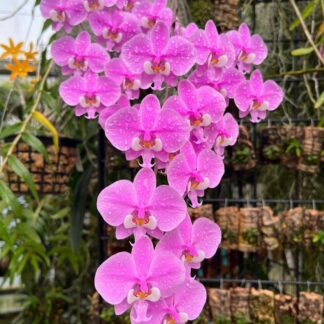Description
IMPORTANT NOTES:
***Please look at all the pictures carefully (and read the text in the photos) so you’ll know the sizes of the plants we’re offering in this listing.***
As American as motherhood and apple pie is a famous sentimental saying in America as it refers to traditional American values. We should add moonshine to that saying, or maybe swap out motherhood with moonshine. ‘As American as moonshine and apple pie’ is just as nostalgic, but has a more modern and ‘rebel’ sensibility to it. Although the term moonshine actually originated in Britain, evoking scenes of hillbillies distilling their liquor in the woods at night, under the light of a pale moon. Making liquor like this was and still is illegal, but it’s been going on for 200 years here in America, and is a proud tradition with a lot of craft and art. Moonshiners ply their trade at night to avoid getting caught and they usually do it deep in the woods by a stream, as the water is needed to condense the alcohol from the fermenting mash.
This Phal is a novel hybrid that you cannot find in grocery stores, as it was produced in a private breeding program. The plants are all big Phalaenopsis plants, but what is most striking is the lovely shade of green most of them have bloomed out. The green shines through in the most subtle way, but it makes a huge impression, as it’s not something you’re expecting in Phals of this style, as usually they’re pure white — beautiful, but a bit dull these days. The greenish color of a pale moon makes these blooms impressive and distinctive and very attractive (and you won’t find these elsewhere!).
Please note that these plants are not clones, but grown from seed, and there is some variability in the flowers; of the ones that have bloomed so far, most appear to have bloomed this moonshine green, but some have come out white, so please take this into consideration prior to purchase as not all the plants we’re offering have bloomed yet. (We are excluding any ones that have *already* bloomed white.)
Also, please note that some plants may have minor cosmetic defects, such as an old dried spot, or a cut leaf (see photo). These are not infected or sick plants, but if these minor cosmetic issues are a problem, please pass on this.
How to grow:
1) Moderate shade (avoid prolonged direct sun). Keep humidity high for best growth.
2) Water once to twice a week; let dry between waterings.
3) Use NZ Sphagnum Moss or chunky bark for plenty of aeration at the roots.
4) Fertilize twice per month.
5) Avoid temps below 50 F; temps into the 90s F or even over 100 F are tolerable if kept shady and well-watered





